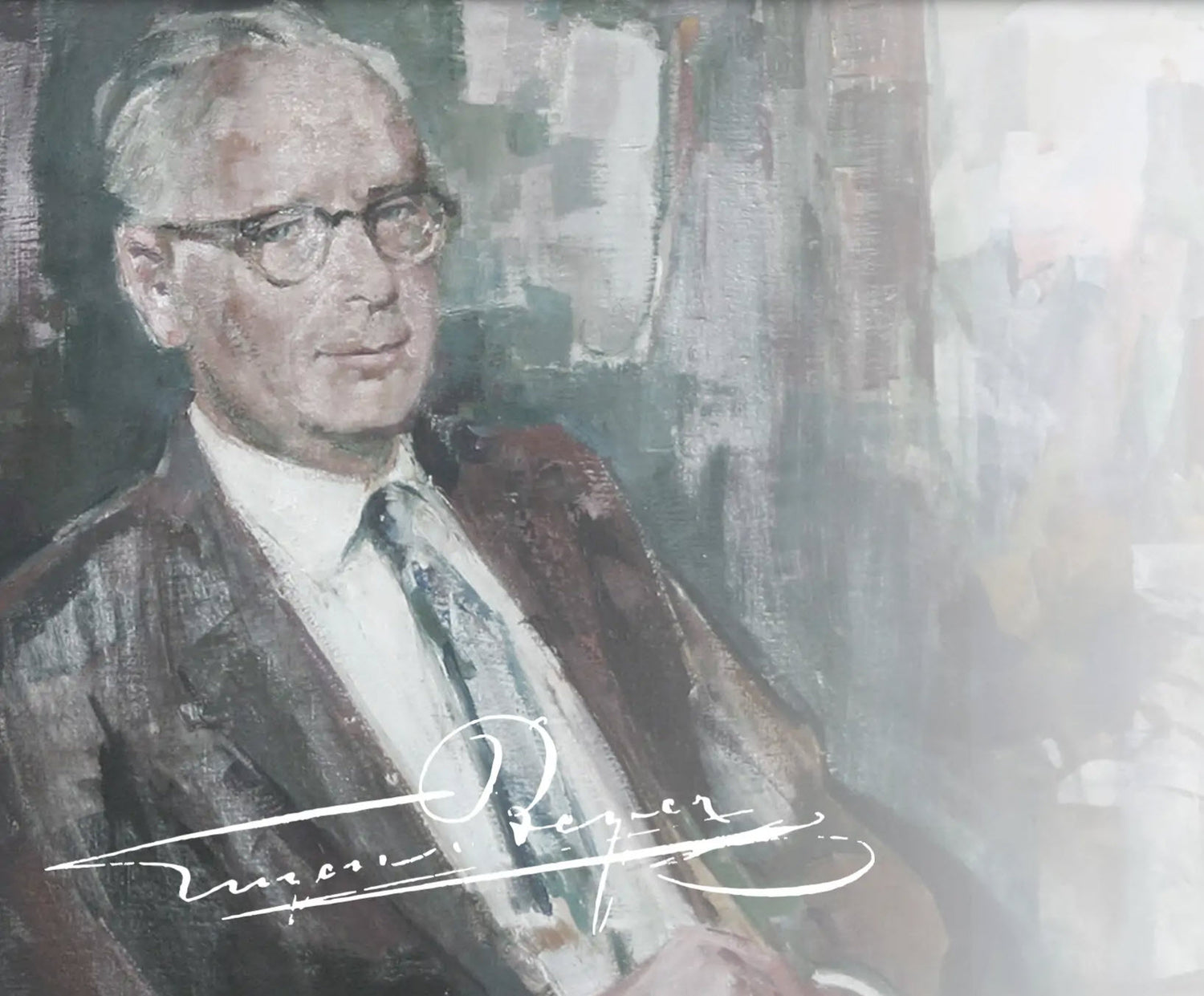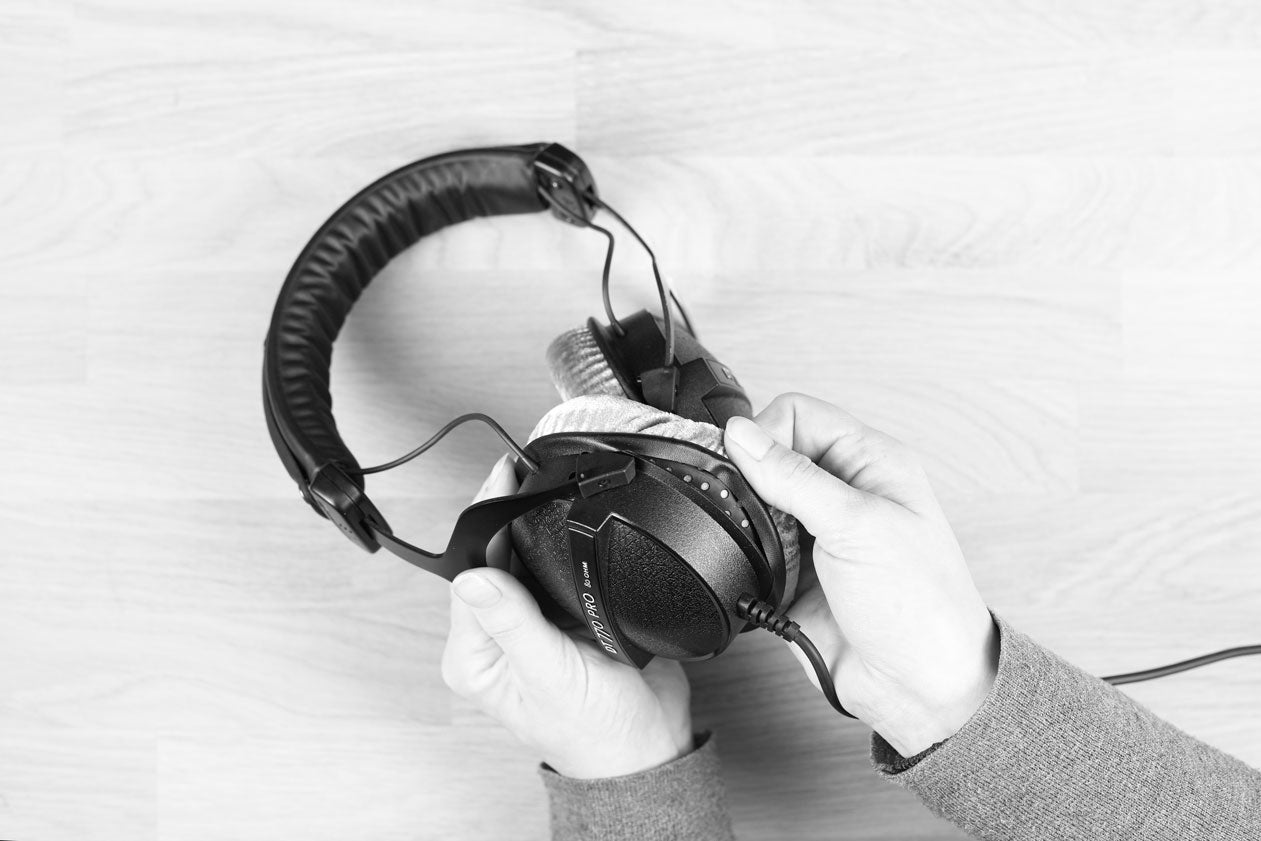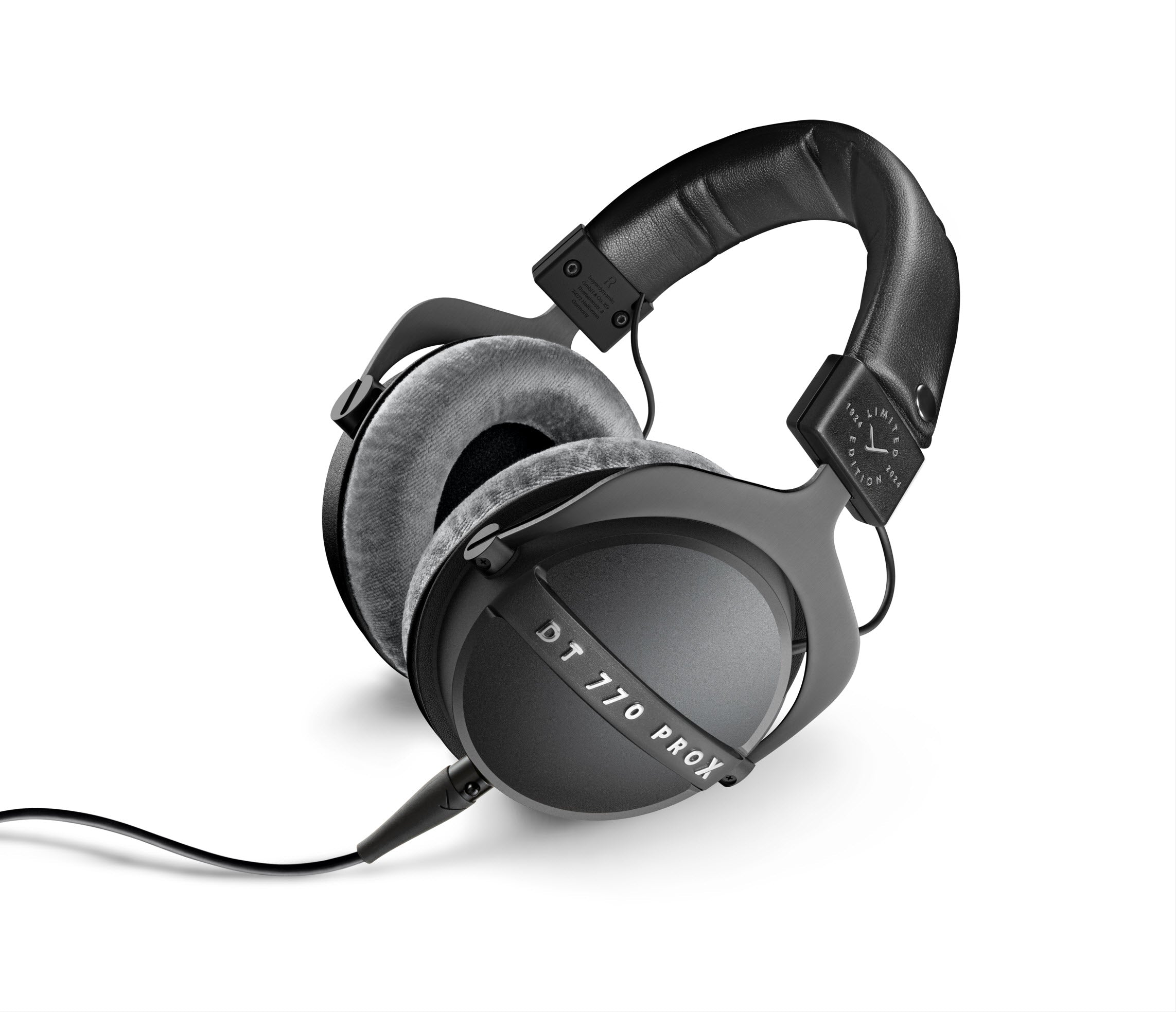A journey through 100 years of beyerdynamic
Our company is celebrating its 100th anniversary this year and we can proudly say that we are now one of the oldest manufacturers of headphones and microphones in the world. We can look back on eventful years characterised by constant change and development, and in which we were able to play a pioneering role in shaping and shaping a number of areas. One thing that has always accompanied us and always will is our belief in the positive effect and power of music, sound and communication – for us, this is the greatest source of inspiration.
This year, we would like to take you on a journey through the past 100 years here on the beyerdynamic blog. In doing so, we’d like to show you what has moved us, how we have changed and developed as a company, and what still defines us and our products.
But how did it all begin?
Who is Eugen Beyer and how did the story of our current company beyerdynamic get its start in 1924?
What challenges have we had to overcome, what milestones have we achieved over this long period and what drives us onward?
Today, we will take you on a journey through our company history.
A true pioneer: Eugen Beyer
After the Russian Revolution, Eugen Beyer, who was born in 1903 in St. Petersburg, moved with his family to Sweden before moving to Berlin in 1921, the central hub for emerging audio technology at the time. Fascinated by the moving pictures of the emerging cinema scene, he made it his vocation to bring these images to life with sound. He began developing and manufacturing cinema loudspeakers and founded the company “Elektrotechnische Fabrik Eugen Beyer” in 1924. This laid the foundation for one of the world’s leading manufacturers of headphones and microphones – and for the beyerdynamic GmbH & Co. KG we know today.
His good instinct for innovations in the field of acoustics proved him right. Sound played an increasingly important role in Germany in the 1920s and 1930s. Public broadcasting brought radio to the centre of society and inexpensive receivers made it affordable for many people. The medium quickly gained in importance.
The first products
Because of these developments, the company soon expanded beyond loudspeakers: The first beyerdynamic headphones, the DT 48, was launched in 1937. As the first set of dynamic headphones (“DT” in the name stands for “Dynamic Telephone”), they were used by generations of sound engineers and reporters. The DT 48 was part of our product portfolio until the end of 2012.
1939 saw the release of the first studio-quality dynamic microphone, the M 19 – a milestone in electroacoustics. The microphone went down in history as the reporting microphone of the then “Reichsrundfunkgesellschaft” (Reich Broadcasting Corporation).
From Berlin to Heilbronn
During the Second World War, the Berlin-based company was completely destroyed, which is why Eugen Beyer decided to relocate to Heilbronn in 1948 and rebuild his factory there.
Eugen Beyer died unexpectedly early in 1959 at the age of just 56. His 26-year-old son Fred R. Beyer then took over responsibility for the fortunes of the company, which he did not relinquish for the next 40 years, leading beyerdynamic from one innovation to the next. Fred R. Beyer was the last member of the Beyer family to head the company.
In 1960, the company moved to a new building in Heilbronn, where the company’s headquarters and production facilities are still located today. Since then, further product innovations have originated in this building – and continue to today. In 2013, in addition to the company headquarters in Heilbronn, a Shipping Center was established in the neighbouring municipality of Talheim.
Highlights of our product history
1960-1980
The first wireless microphone, the “Transistophone”, appeared in 1962. The newly developed M 88 directional microphone followed in 1963, the only microphone chosen for the official events in the programme of Queen Elizabeth II’s royal visit to Australia. By that time, the directional microphone had already gained a reputation for providing excellent voice reproduction. Three years later, in 1966, the E 1000 made its breakthrough by being chosen as the exclusive microphone for The Beatles’ first ever tour of Germany. 1965 saw the launch of another classic on the market, the DT 100 headphones.
In the field of conference technology, the first visitor guidance system was introduced in 1974 under the name “Informaphone FSE 20”. Two years later, the ET 1000, the first electrostatic headphones to be developed and manufactured in Germany, were launched on the market. And so, more and more products followed that inspire millions of people to this day.
1980-2000
The DT 880, the first dynamic headphones with electrostatic reproduction characteristics, was added to our product portfolio in 1980. Five years later, the new studio headphones of the premium line, the DT 770 PRO and DT 99 PRO, each studio classics par excellence, were launched on the market. Today, they still enjoy a large presence in studios around the world and impress artists of every genre.
They were followed in 1997 by the introduction of the world’s first digital microphone, the MCD 100, a product with which we once again demonstrated our ability to innovative. These microphones have also been used in the German Bundestag in Berlin since 1998.
In 1998, we introduced the world’s first wireless conference system – the MCW 100. Up to this point, there had only been infrared systems on the market. This was then replaced by the MCW-D 100 conference system (D stands for digital) in 2001, followed by the third generation, the MCW-D 200, in 2003. The system has been successfully installed in numerous national and international institutions, such as the British Embassy in Brazil, the Ministry of Defence in India, the Ministry of Foreign Affairs in Mexico and the historic town hall in Cologne.
2005-2009
2005 saw the launch of the online headphone Manufaktur, the only one of its kind in the world at the time, which made it possible to customise the DT 880 Edition and DT 990 Edition premium headphones. Our factory is still very popular today with its wide range of personalisation options.
Our first generation of the MMX 300 gaming headset brought sophisticated sound to gaming in 2007 and continues to impress across the board today. Since 2008, the headset has also been part of our Manufaktur, where customers can personalise products with engravings or, for example, earpiece shells with individual motif printing (only available in selected countries).
Another milestone in our history of innovation is our specially-developed Tesla technology, which was first used in 2009 in the first generation of the T1 open high-end headphones, which are still our flagship for sophisticated music enjoyment today. Named after the pioneer of alternating current Nikola Tesla, the term tesla is used by experts to refer to the unit of magnetic induction or magnetic flux density in the metre–kilogram–second system (SI) of physical units. The magnetic flux density is important for headphones – it indicates the intensity of the magnetic field (magnetic field strength) in the air gap of the magnetic circuit. Because a magnetic flux density of more than one tesla is achieved in beyerdynamic acoustic transducers, the term tesla technology is used. The result is more precise and detailed sound, while at the same time increasing energy utilisation, which also benefits low-power mobile devices, for example.
2010-2023
Product developments also continued in the professional audio sector: Two premium models were launched in 2015, the DT 1770 PRO and the DT 1990 PRO. Both models set a new reference standard in the field of professional studio headphones and are our first studio headphones with integrated Tesla technology.
To this day, Tesla technology remains an important achievement in the search for the best possible sound. In 2016, a miniaturised version of the Tesla driver was developed for the first generation of our high-end Xelento series of headsets that is every bit as exceptional as the larger original. They offer a rich diversity and precision that is second to none among in-ear models.
Digital progress and the cultural changes in the world and markets are also influencing our company. We are living in an era of constant change. This is also noticeable in the use of consumer audio and professional audio products.
In the consumer audio segment, the Aventho Bluetooth on-ear wireless headphones with sound personalisation were added to our product portfolio in 2017. This model utilised our MOSAYC sound personalisation for the first time. This made it possible to create an personalised listening experience with our headphones through the use innovative personalisation software from our cooperation partner Mimi Sound Personalization. Several of our headphone models are now equipped with this feature.
Despite the months of turbulence and uncertainty, we also succeeded in inspiring music lovers with the launch of the third generation of the high-end headphone models T1 and T5 in 2020. A lot has happened during this time, not only in the consumer sector, but also in the PRO sector, where work has been carried out on the next product generation. With the introduction of the PRO X series in 2021, we combined the very latest audio technology with the wealth of knowledge we had acquired during our company’s nearly 100-year history. The highlight of the headphones is the STELLAR.45 driver that we produce in Heilbronn. It delivers an unprecedented level of studio-headphone performance. The microphones in the PRO X series dazzle the eye with their well-crafted electro-acoustic design. Thanks to these technical refinements, the PRO X series enables modern creators to throw themselves completely into their creativity – any time and any place.
This was followed by the first beyerdynamic True Wireless in-ear headphones, the Free BYRD, with ANC and MOSAYC sound personalisation. In addition, since presenting our first speakerphone PHONUM in 2019, we have been able to launch new speakerphones in the past two years: beyerdynamic SPACE and beyerdynamic SPACE MAX, which combine the best of both worlds – captivating sound for music playback with the best speech intelligibility for calls and meetings – perfectly meeting the ever-changing needs of our time once again.
Since autumn 2023, the beyerdynamic product portfolio has been rounded off by our first wireless gaming headset, the MMX 200 wireless. The headset has many impressive features, such as augmented mode, low latency and hybrid mode with Bluetooth® 5.3, which make the MMX 200 wireless indispensable for any gamer looking for maximum performance and limitless flexibility.
Today and beyond
beyerdynamic is still a 100% family-owned business to this day. Andreas Rapp took over the management of the company in 2023 and set himself the goal of leading beyerdynamic into its anniversary year and beyond into a successful future.
At beyerdynamic, we passionately pursue the vision of always creating the best audio solutions for our customers with innovative and durable products in all areas of the company.
Our mission is to create an unrivalled sound experience for our customers around the world and to shape the future of audio as a leading international German manufacturer of pioneering technologies.
Made in Germany
We still manufacture more than 85% of the headphones and microphones we sell in Germany. The majority of the necessary processes take place at our company site in Heilbronn – from research and development, to product design and construction, to logistics and marketing. Today, we are one of the few audio companies that still produce in Germany.
What our products across the entire range have in common is the fact that they represent the company’s constant desire to innovate and its continuous efforts to take the technology involved to the next level. This was the case back when Eugen Beyer founded the company almost 100 years ago, and it is still the case today.
There’s nothing that can’t be improved.
And we work on this every day.




